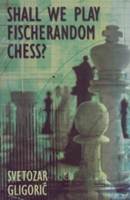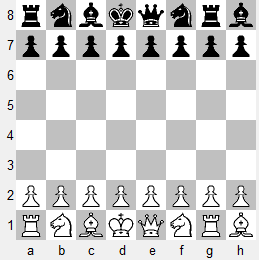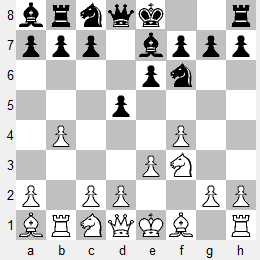 A list of the book's contents on the Schachversand Niggemann page, Shall we play Fischerandom Chess?, tells us that the book is divided into three sections: a brief history of chess, the development of Fischer's idea, and sample GM games. Despite having been written and published in 2002, when there was little practical experience with the game that would later be called chess960 (when was it so named?), Gligoric's work still offers the best material on the subject.
A list of the book's contents on the Schachversand Niggemann page, Shall we play Fischerandom Chess?, tells us that the book is divided into three sections: a brief history of chess, the development of Fischer's idea, and sample GM games. Despite having been written and published in 2002, when there was little practical experience with the game that would later be called chess960 (when was it so named?), Gligoric's work still offers the best material on the subject.
Why did Gligoric write the book? He explains in the 'Author's Note'.
It was my pleasure to witness part of the process of creation of the randomized chess game, invented and formulated by the world chess champion [Bobby Fischer], who, having probably liked my interpretation of his match versus Spassky in my earlier book on Reykjavik 1972, at the time suggested the idea that I try to write a book myself about the unknown subject of this new version of the game of chess.
Like chess960 itself, the book has been largely ignored by the mass of the chess playing public. There are, however, a few reviews available on the web. Amazon.com currently has three Customer Reviews. One of these, by Gene Milener, author of one of the few other books on chess960, is another list of the contents. A second is more of an opinion on chess960 ('Fischerandom chess is unlikely to replace "classical" chess for much the same reason that the aluminum bats have not entered professional baseball: it would take a beautifully crafted game with a long tradition ... and throw it all out the window.') than on Gligoric's book. The third is unintelligible ('very useful for those who think clasical chess in diing into uncatchible theory+computer combo').
Of the reviews found on chess sites, the first chronologically is on Chessville.com (2002): Reviewed By David Surratt; 'If you are interested in FRC, or even just in chess history - buy this book.' The next is on Jeremysilman.com (2004; 'Shall We Play Fisher Random Chess?'): Reviewed by John Donaldson; 'If you have any interest in random chess you will want to get Gligoric's book.' The most recent is a discussion on a Chess.com forum (2010): Interesting Chess960 FRC books; Milener surfaces again and presents his real opinion, 'I ask you honestly whether anything in Gligoric's Fischerandom book says anything at all about Fischerandom?', followed by a few concepts from his own book.
My favorite section of the book is a postscript to the eight games played between GMs Leko and Adams at Mainz 2001. There are comments on Fischer's version by Leko, Adams, Yusupov, Bronstein, Kasparov, and Kramnik. Here's Kramnik:
I tried many different starting positions and all these were somehow very unharmonious. And this is not surprising as in many of these positions there is immediate forced play: the pieces are placed so badly at the start that there is a need to improve their positions in one way only, which decreases the number of choices.
It's a good point and would provide an interesting kickoff for another post.


